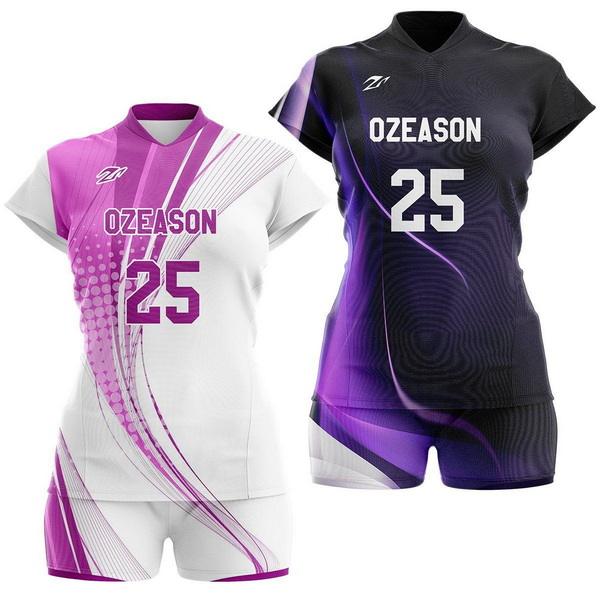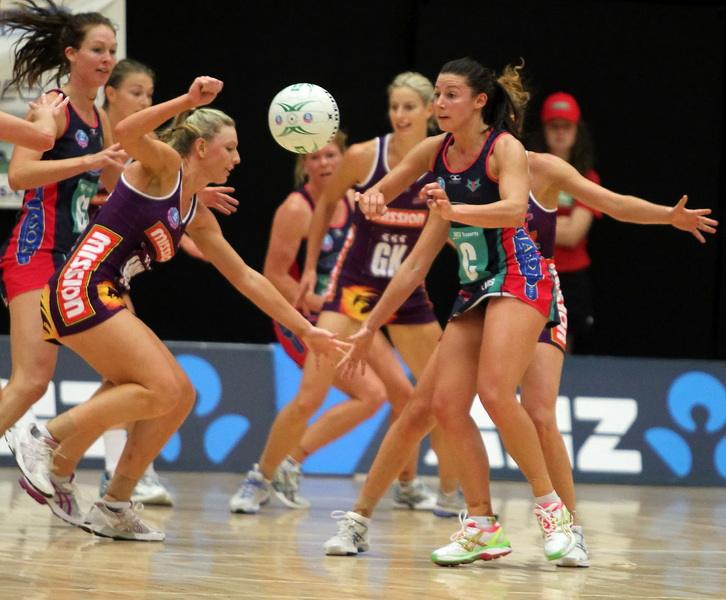Content Menu
● What Is Seamless Bonded Construction?
>> Benefits Over Traditional Sewing
● The Technical Edge: Why Brands Choose Seamless Bonded Construction
>> 1. Superior Comfort and Performance
>> 3. Advanced Moisture and Climate Control
>> 4. Design Freedom and Customization
>> 5. Sustainability Advantages
● Supply Chain Insights: Sourcing and Manufacturing Seamless Bonded Sportswear
● Product Development: From Concept to Market
>> 3. Customization and Branding
● Advanced Technical Considerations in Seamless Bonded Sportswear
>> Material Compatibility and Innovation
>> Seam Engineering and Stress Distribution
>> Integration with Functional Features
>> Impact on Weight and Packability
● Supply Chain and Production Challenges
>> Managing Lead Times and Costs
>> Scalability and Volume Production
>> Risk Mitigation and Compliance
● Market Positioning and Consumer Appeal
>> Premiumization Through Technology
>> Aligning with Consumer Trends
>> Collaborations and Limited Editions
● Frequently Asked Questions (FAQ)
>> 1. What types of sportswear benefit most from seamless bonded construction?
>> 2. How does seamless bonding improve garment durability?
>> 3. Are seamless bonded garments more expensive to produce?
>> 4. Can sustainable materials be used in bonded sportswear?
>> 5. How can brands ensure quality when sourcing bonded sportswear?
In the rapidly evolving landscape of sportswear, brands are seeking not only high-performance apparel but also innovative construction methods that set their products apart. Seamless bonded construction has emerged as a game-changer, offering unmatched comfort, durability, and design flexibility for custom branded sportswear. This article delves deep into the technical aspects, supply chain implications, and product development strategies behind seamless bonded construction, equipping brand owners and product managers with the knowledge to make informed decisions and elevate their collections.

What Is Seamless Bonded Construction?
Seamless bonded construction refers to advanced apparel manufacturing techniques where fabric panels are joined without traditional stitching. Instead, technologies like heat, adhesives, or ultrasonic welding are used to create smooth, flat seams that enhance both the performance and aesthetics of sportswear.
Key Technologies
– Heat Bonding: Uses controlled heat and pressure to fuse fabric edges, creating a strong, flexible seam.
– Adhesive Bonding: Specialized adhesives join fabrics, often used for lightweight or delicate materials.
– Ultrasonic Welding: High-frequency vibrations generate heat, melting and bonding synthetic fibers at the seam for a watertight, durable finish.
Benefits Over Traditional Sewing
– No bulky seams or chafing points
– Enhanced stretch and movement
– Superior water and wind resistance
– Sleek, minimalist look
The Technical Edge: Why Brands Choose Seamless Bonded Construction
1. Superior Comfort and Performance
Seamless bonded garments eliminate the friction points and bulkiness of stitched seams, resulting in a smoother feel against the skin. This is crucial for athletes and active consumers who demand maximum comfort during high-intensity activities.
2. Enhanced Durability
Bonded seams are less prone to splitting or unraveling compared to stitched seams, especially in high-stress areas like shoulders, sides, and crotch panels. This ensures the longevity of premium sportswear—even after repeated washing and extreme use.
3. Advanced Moisture and Climate Control
Bonded construction allows for the integration of multi-layer fabrics and technical membranes (such as Gore-Tex® or PrimaLoft®), optimizing moisture management and thermal regulation. This is essential for outdoor and performance apparel where weather resistance is non-negotiable.
4. Design Freedom and Customization
Brands can achieve intricate panel designs, precision cutouts, and seamless graphics placement. This level of customization is ideal for creating unique, branded looks that resonate with target consumers and support premium positioning.
5. Sustainability Advantages
Bonded construction reduces the need for multiple threads and trims, minimizing material waste. Many manufacturers also use eco-friendly adhesives and recycled fabrics, supporting brands’ sustainability commitments.
Supply Chain Insights: Sourcing and Manufacturing Seamless Bonded Sportswear
Global Manufacturing Hubs
Asia remains the powerhouse for bonded sportswear manufacturing, with China, Vietnam, and Indonesia leading in both technology and capacity. However, pan-Asian country-of-origin options allow brands to navigate tariffs and geopolitical shifts while maintaining quality and efficiency.
Choosing the Right Partner
The complexity of seamless bonded construction requires collaboration with manufacturers that possess:
– State-of-the-art machinery (e.g., ultrasonic welders, laser cutters)
– Skilled technical development teams
– Experience with advanced materials (Gore-Tex®, PrimaLoft®, bio-based elastanes)
– In-house testing and quality control labs
Material Sourcing
Selecting the right fabrics is critical. Performance knits, technical membranes, and sustainable fibers must be compatible with bonding techniques. Leading suppliers offer collaborative development to tailor material properties to brand requirements.
Production Flexibility
Portable production models ensure consistent quality regardless of manufacturing location. This flexibility is vital for brands scaling up or diversifying their sourcing to mitigate risk.
Product Development: From Concept to Market
1. Design and Prototyping
Modern software tools like CLO 3D enable designers to visualize seamless garments and simulate performance before physical sampling. This accelerates development and reduces costly errors.
2. Performance Testing
Technical sportswear must undergo rigorous testing for seam strength, waterproofing, breathability, and abrasion resistance. Brands should partner with manufacturers equipped with in-house labs and certified test protocols.
3. Customization and Branding
Bonded construction supports advanced branding techniques, including heat transfers, laser-cut logos, and seamless color blocking. This enhances brand visibility and product differentiation.
4. Quality Assurance
Consistent quality is non-negotiable for premium sportswear. Brands should implement robust QA processes, including on-site inspections and third-party audits, to ensure every batch meets specifications.

Advanced Technical Considerations in Seamless Bonded Sportswear
Material Compatibility and Innovation
The success of bonded construction hinges on fabric compatibility. Synthetic fibers such as polyester, nylon, and elastane blends are preferred due to their thermoplastic properties, which respond well to heat and ultrasonic bonding. Innovations in bio-based elastane and recycled polyester are increasingly integrated, allowing brands to meet sustainability goals without compromising technical performance.
Seam Engineering and Stress Distribution
Unlike traditional seams that rely on thread tension, bonded seams distribute stress across the bonded surface. This requires precise engineering to ensure the adhesive or weld maintains flexibility without compromising strength. Manufacturers employ finite element analysis (FEA) and other simulation tools to optimize seam placement and bonding parameters, ensuring durability under dynamic movement.
Integration with Functional Features
Seamless bonded construction enables the incorporation of functional elements such as ventilation zones, compression panels, and reflective detailing without interrupting the garment’s surface. This integration enhances athlete performance by improving airflow, muscle support, and visibility during low-light conditions.
Impact on Weight and Packability
By eliminating bulky seams and excess stitching, bonded garments often weigh less and pack smaller, appealing to outdoor enthusiasts and travelers. This weight reduction does not sacrifice durability, making bonded sportswear ideal for ultralight and performance-driven markets.
Supply Chain and Production Challenges
Managing Lead Times and Costs
While bonded construction offers numerous benefits, it demands longer lead times for tooling, prototyping, and quality validation. Brands must plan accordingly, balancing speed to market with the need for technical precision. Early collaboration with manufacturers can mitigate delays and optimize cost structures.
Scalability and Volume Production
Scaling bonded sportswear production requires manufacturers to maintain consistent bonding quality across large volumes. Automated bonding lines and rigorous process controls are essential to prevent defects and maintain uniformity.
Risk Mitigation and Compliance
Due to the specialized adhesives and processes involved, manufacturers must comply with environmental and safety regulations. Brands should verify certifications such as OEKO-TEX® Standard 100 and bluesign® to ensure chemical safety and sustainability compliance throughout the supply chain.
Market Positioning and Consumer Appeal
Premiumization Through Technology
Seamless bonded construction elevates sportswear to a premium category, justifying higher price points through tangible performance and aesthetic benefits. Brands leveraging this technology can differentiate themselves in crowded markets by emphasizing innovation and quality.
Aligning with Consumer Trends
Modern consumers increasingly demand apparel that combines functionality with sustainability and style. Bonded sportswear meets these expectations by offering eco-conscious materials, superior comfort, and sleek designs.
Collaborations and Limited Editions
The flexibility of bonded construction supports limited-edition releases and collaborations with designers or athletes, enabling brands to create buzz and exclusivity around their products.
Conclusion
Seamless bonded construction is redefining the standards of custom branded sportswear, offering unmatched comfort, durability, and design flexibility. Brands that embrace this technology position themselves at the forefront of innovation, able to deliver premium products that meet the evolving demands of athletes and consumers alike.
Ready to elevate your sportswear collection with seamless bonded construction? Contact our technical team today for a consultation and discover how we can bring your brand vision to life with cutting-edge apparel solutions.

Frequently Asked Questions (FAQ)
1. What types of sportswear benefit most from seamless bonded construction?
Seamless bonded construction is ideal for high-performance activewear, including running gear, yoga apparel, cycling kits, and outdoor jackets. It is especially beneficial where comfort, flexibility, and weather resistance are priorities.
2. How does seamless bonding improve garment durability?
Bonded seams are less likely to split or fray compared to traditional stitches, particularly in high-stress areas. This results in longer-lasting apparel that maintains its integrity through intense use and frequent washing.
3. Are seamless bonded garments more expensive to produce?
Initial setup costs can be higher due to specialized equipment and skilled labor. However, the long-term benefits—reduced material waste, faster production, and premium positioning—often offset these expenses, especially for brands targeting the high-end market.
4. Can sustainable materials be used in bonded sportswear?
Yes. Many manufacturers now offer recycled and bio-based fabrics that are fully compatible with bonding technologies, supporting brands’ sustainability goals without compromising performance.
5. How can brands ensure quality when sourcing bonded sportswear?
Partner with manufacturers that have proven technical expertise, advanced machinery, and robust quality assurance processes. On-site inspections and third-party testing further ensure that finished products meet the highest standards.
Hot Tags:
Technical Expertise Sportswear, Custom Branded Sportswear, Seamless Bonded Construction, Advanced Sportswear Technology, Sportswear Manufacturing Techniques, Performance Sportswear Design, Bonded Sportswear Construction, Sportswear Fabric Technology, Custom Activewear Manufacturing, High Tech Sportswear
